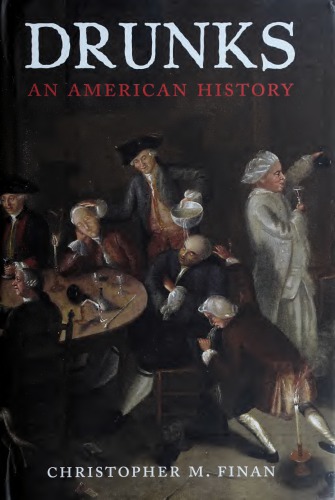
Drunks
An American History
کتاب های مرتبط
- اطلاعات
- نقد و بررسی
- دیدگاه کاربران
نقد و بررسی

April 10, 2017
In a spirited look at the history of drinking and alcoholism in America, Finan (From the Palmer Raids to the Patriot Act) traces the complex relationship between people and their dependency on drink from the 19th century up to the 21st century. It’s a sobering portrait of the power alcohol has on those addicted to it. Finan chronicles the lives and struggles of those who have fought to free themselves and others like them, showing just how far society has come in dealing with the issue. Here, readers will find the earliest temperance societies, the rise and fall of Prohibition, the creation of the Salvation Army, and, perhaps most significantly, the birth and evolution of Alcoholics Anonymous and the vast treatment industry it spawned. “The fight against addiction is one of America’s great liberation movements. Like the battles for racial equality, women’s rights, and sexual freedom, its history is marked by periods of progress and devastating reverses,” Finan notes, humanistically rejecting the notion that addicts are responsible for their plight. Finan’s delivery can be a bit dry, but he offers captivating stories in a well-researched, in-depth manner, shining a light on a topic well worth exploring in detail. Agent: Jill Marr, Sandra Dijkstra Literary.

May 1, 2017
An appropriately harrowing account of booze and its discontents.Alcohol has been with us always and, with it, day-after regrets. One early regret, writes Finan (From the Palmer Raids to the Patriot Act: A History of the Fight for Free Speech in America, 2007, etc.), director of the American Booksellers for Free Expression, came from a Seneca leader named Handsome Lake, who saw what ravages alcohol was wreaking among his people and preached a gospel of abstinence: "Whiskey is the great engine which the bad Spirit uses to introduce Witchcraft and may other evils amongst Indians." So effective was the message that Handsome Lake was able to deter a generation of followers. Today, Native people, as well as Americans of all ethnicities, turn to AA for help, and Finan tells a respectful, demythologized version of the story of Bill Wilson and Bob Smith, who founded the organization in an effort to keep each other sober after some scarifying cold-turkey moments led them to realize "that they had been at their lowest point when they discovered a power greater than themselves that made it possible for them to stop drinking." Some of Finan's case studies are a little repetitive and tedious, but they all add up to a trajectory of recognition that alcohol is a cause of social and physical harm, with huge repercussions. The author notes that whereas AA members cloaked themselves in anonymity precisely because of the prejudice against hiring drunks, whether wet or dry, alcoholism has lost some of its stigma as it has been recognized as a medical condition. With that, however, peer support has given way to professionalized treatment, crowding out "the sober alcoholics who had once played such a prominent role as counselors." Finan closes with a gimlet-eyed look at some of AA's alternatives, including the recent movement to transform alcoholic drinking into social drinking, forgoing the old model of complete abstinence. A worthy treatment of recovery movements in American history, unsung heroes and all.
COPYRIGHT(2017) Kirkus Reviews, ALL RIGHTS RESERVED.

























دیدگاه کاربران